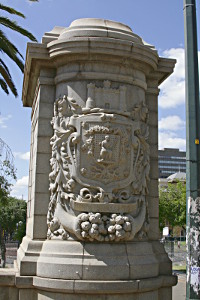Pretoria's Church Square
In, what used to be the centre of Pretoria, lies a square surrounded by a host of historic building. Many buildings date from the early 1900’s, each with their own unique history.
The founder of Pretoria, Martinus Pretorius, declared the square be used as a market and Churchyard. In 1856, the first small thatch-roofed Church is constructed. This was subsequently replaced by a larger thatch-roofed church. When the second church burnt down in 1882, a Gothic-style church replaced it. This is the church seen in many of the early photographs of Church Square. The third and last church on the square was demolished in 1905 after the state funeral of Paul Kruger.
In 1896, Sammy Marks commissioned a statue of Paul Kruger. Due to the outcome of the Second Anglo-Boer War, the statue was denied it's placed on Church Square by the new British Government. Instead, Sammy Marks donated a fountain for the square in 1905. In 1910 the town council resolved to move the fountain due to water usage concerns. The fountain now stands at the Pretoria zoo. The Paul Kruger statue was finally placed on Church Square in 1954.
With Church Square being the centre of Pretoria for a long time, it was also used as the transport hub of Pretoria. Before the introduction of electric trams in 1910, horse-drawn trams connected various parts of the city to Church Square. Later on, Church Square became the centre for bus routes across the city.

